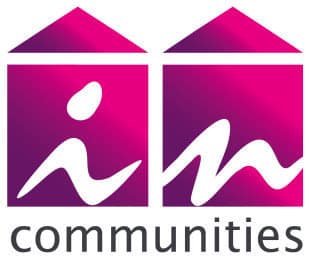ERP Systems Selection

Why ERP Systems Selection Matters
Choosing the right ERP system is one of the most important decisions your organisation will make on its transformation journey. The right system acts as the foundation of your operations, connecting teams and streamlining processes to provide the insights you need to make informed decisions. A well-matched ERP system will empower your people, drive efficiencies, and ensure your business is ready to adapt to future challenges.
ERP systems selection more than simply ticking boxes on a feature list. It’s about understanding your business’s unique needs and finding a solution that fits your long-term strategy. Selecting the wrong system can lead to costly rework, frustrated teams, and missed opportunities. That’s why it’s essential to approach ERP selection with a clear strategy, involving the right stakeholders early and focusing on how technology can enable your business goals and culture. At Nine Feet Tall, we guide organisations through this process, ensuring every decision is informed, collaborative, and sets the foundation for lasting success.
The Nine Feet Tall consultant was first class. They integrated seamlessly into our team. I am very impressed.
Colin Bagley
IT and Business Systems
Key Steps to Choosing the Right ERP System
A successful ERP selection process starts with a robust, people-first approach. Here’s how we help organisations set themselves up for success:
Clarify Objectives
Clarify what you want to achieve and how ERP will support your strategy.
Engage Stakeholders
Engage stakeholders from across the business to capture diverse needs and secure buy-in.
Business Requirements
Map out your business requirements, distinguishing between ‘must-haves’ and ‘nice-to-haves’.
Shortlist Solutions
Research and shortlist ERP solutions that align with your industry, size, and growth ambitions.
System Demonstrations
Arrange tailored demonstrations to see how each system supports your specific processes.
Assess the Options
Evaluate each option against your requirements, culture, and long-term goals.
By following these steps, you lay the groundwork for an ERP system that delivers real value and supports your business as it evolves.
Choosing the Right Technology as an IT Leader
Are you an IT leader?
Moving from a legacy system to a leading edge solution and knowing which solution is right for you needs is challenging.
Critical Criteria for ERP Selection
Selecting the right ERP system means looking beyond just features. It’s about finding a solution that fits your business model, integrates with your existing systems, and can scale as you grow. Critical criteria to consider include:
- Functional fit: Does the system meet your core business requirements and support your unique processes?
- Industry experience: Has the vendor worked with organisations like yours, and do they understand your sector’s challenges?
- User experience: Is the system intuitive and accessible for your teams, supporting adoption and productivity?
- Integration: Can the ERP connect smoothly with your current technology landscape?
- Scalability: Will the system grow with your business, supporting future needs and ambitions?
- Total cost of ownership: Consider not just the upfront investment, but ongoing costs, support, and upgrades.
- Vendor partnership: Is the provider committed to your success, offering reliable support and a collaborative approach?
Taking a holistic view of these criteria ensures you select an ERP system that delivers value today and remains a strong foundation for tomorrow.
Common Pitfalls and How to Avoid Them
ERP selection is a complex process, and even experienced organisations can fall into common traps. These include underestimating the importance of stakeholder engagement, focusing too heavily on technology over business needs, and failing to plan for integration and change management. Scope creep, unclear requirements, and overlooking total cost of ownership can quickly derail the process.
To avoid these pitfalls, it’s vital to foster open communication, involve the right people from the outset, and remain focused on your business objectives. Define your requirements clearly, challenge assumptions, and ensure every decision is made with both immediate and long-term needs in mind. At Nine Feet Tall, we help organisations navigate these challenges with a proven, collaborative approach to ensure your ERP selection is robust, future-proof, and delivers on its promise.
How we work with you
We will take the pain away and get projects over the line. We bring a practical and pragmatic approach to project recovery from our people-focused team. We thrive on the difficult and succeed by understanding stakeholder sensitivities with an agile and ‘just enough’ approach. We re-build momentum, bring back the passion and help get back on track, whilst supporting teams to deliver successful go live.
Our Latest ERP Insights
Frequently Asked Questions
ERP inventory management offers several advantages for retail businesses, including seamless multi-channel integration. By using ERP systems, retailers can manage inventory across multiple sales channels, such as physical stores, e-commerce platforms, and marketplaces. This ensures consistent and accurate product availability information, leading to improved customer satisfaction. Furthermore, accurate inventory data provided by ERP systems reduces instances of backorders and out-of-stock items, enhancing the overall customer experience and fostering customer loyalty.
ERP systems excel at managing surplus inventory by providing insights into slow-moving or obsolete items. By analysing inventory data, ERP systems help businesses make informed decisions about discounting, liquidating, or repurposing excess stock. This reduces surplus inventory, freeing up valuable warehouse space and capital, ultimately improving the bottom line. Additionally, ERP systems enable businesses to minimise the risk of excess holding costs associated with surplus inventory.
ERP systems facilitate efficient planning of replenishment orders by integrating various factors such as current inventory levels, historical sales data, lead times, and demand forecasts. By analysing these variables, ERP systems generate accurate and timely replenishment suggestions, minimising the risk of stockouts or overstocking. This helps businesses optimise their inventory levels, reduce holding costs, and ensure timely availability of products to meet customer demand.
The future of ERP is being shaped by trends such as cloud-first adoption, composable ERP architectures, artificial intelligence integration, and a shift toward modular, incremental implementations. These innovations enable faster deployment, greater flexibility, and improved business insights.
AI is transforming ERP by automating data analysis, predicting project bottlenecks, and streamlining configuration and testing processes. This leads to smarter, more efficient ERP implementations and helps organisations make data-driven decisions faster.
Composable ERP allows businesses to select and integrate only the modules they need, resulting in enhanced agility, scalability, and cost savings. This approach supports rapid adaptation to market changes and evolving business requirements, making it a cornerstone of the future of ERP.
ERP Systems Selection
Get in touch with one of our ERP experts today and get the right solution for your business needs.













